Why we ran it: To see if this new V6 hybrid can match the power and refinement of Bentley’s W12 and V8 petrol powertrains
Month 4 - Month 3 - Month 2 - Month 1 - Specs
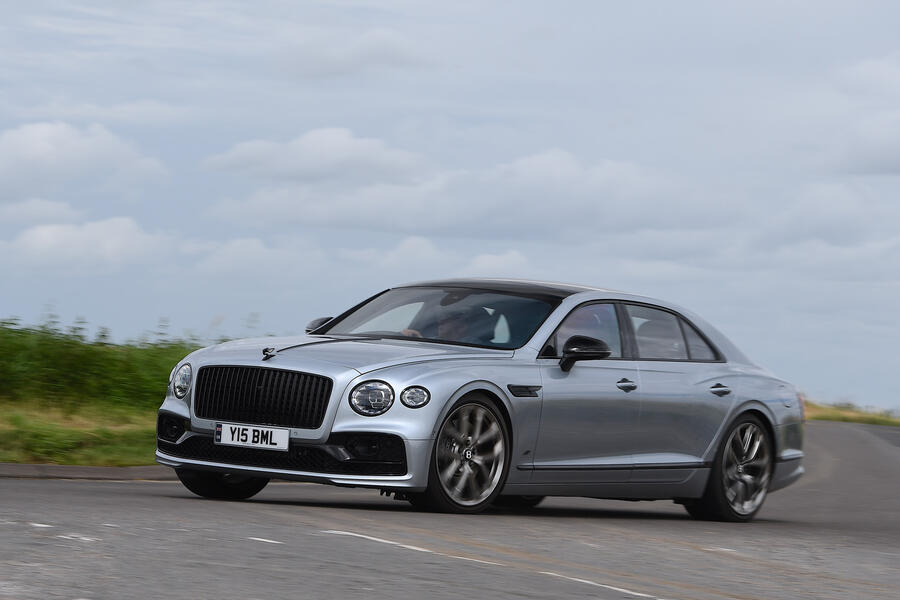
Life with a Bentley Flying Spur Hybrid: Month 4
Did plug-in hybrid power kill the traditional Bentley vibe? Here’s our final verdict - 11 October 2023
It takes training to know how to use and assess a car like the Bentley Flying Spur PHEV. I reckon it takes all of three months and three weeks, which happens to be exactly the length of time the car was with me.
‘You would say that’, I hear you cry, but there’s a serious point here. If you try to use it like an ordinary car (and it takes training not to), you will miss the point of it.
The Spur isn’t an all-rounder, a car to cater for all of your motoring needs, even if Bentley insists that its cars do amass very large mileages. But most owners possess something else for a Sunday morning blast or a post office visit. A Bentley is for first-class, relatively long-distance travel – not for casual nipping about.
Use it for trivial errands and it will disappoint. The rich people who buy them instinctively know the score; us rank-and-filers need to realise it.
Once I’d done so, it was time to get down to the meat of the assessment: how good was this PHEV as a luxury limousine and especially how good was it compared with its siblings, the W12, nearing retirement, and the extremely healthy pure-V8?
Like most Bentleys, this is an uplifting car. It’s quiet and smooth. The long wheelbase works with a three-mode air suspension, a considerable body mass and a lot of sound-deadening paraphernalia to deliver progress that’s extremely refined and comfortable. Only when you step from a Rolls-Royce or that awesome BMW i7 does it occur to you that it has rivals on that score. Nobody arrives from a life in ordinary cars and complains about its refinement.
Against the others, you might say that it’s more prone to variations in road noise and there can be a sporty, slightly muscular character to its gait and responses that give it an athletic character of its own. In old money, if you saw a 2.9-litre V6 being used to propel a 2.5-tonne limousine, you’d have presumed it wasn’t going to work very well. But this is a twin-turbocharged unit making well over 100bhp a litre and helped by a 134bhp electric motor.
Most drivers won’t complain about a 4.3sec 0-62mph time, yet just occasionally – one passing manoeuvre in 20 – it crosses your mind that you could do with a bit more urge in the 60mph range.
You could also do with either a slightly better engine note (blame Euro 6 for that) or none at all. One of my unkinder passengers reckoned that, when you could hear the V6, it sounded like a vacuum cleaner.
What I grew to love was the smooth, precise, noiseless way that the car manoeuvred at low speed – although having tried Spurs with four-wheel steering (you can’t get it on the PHEV, for packaging reasons), I would have to say not having it was a major drawback.
People sometimes suggest that fuel consumption isn’t an issue in cars as large and opulent as this, but drive one for a few thousand miles and see if you still feel like that. With great consumption, you get a very good touring range (500 miles is comfortable), and no matter how wealthy you or your employer may be, there's modern satisfaction in not guzzling juice in the way we used to in the 15mpg Range Rover days.
The pattern of my life meant I usually charged the battery from bottom to top every 200-300 miles. Aided by that regular 30 miles of assistance, I managed to turn a 4200-mile fuel consumption average of 37.1mph, which I think is pretty impressive, because the day was almost never used for short-haul electric running as many will be.
Here's the burning question: would I choose this PHEV over the V8? I value efficiency these days, plus I reckon the PHEV would add 100 miles to the car's range - a major enticement. But the V8 go a little harder, would sound better and might just have a slightly tougher mid-range.
Where the Spur deserves praise is in its supreme ability to swallow miles. You never sit there wishing time and miles away. You start a journey and then you end it, having enjoyed the experience in between. The comfort is beyond criticism. I’ve also practically stopped trying to assess Bentley’s interior quality. It’s the best. The only decor mistake is likely to be your own: there are so many options that you might get it wrong.
On the other hand, Bentley has recently produced new modifiable 'themes' to help you specify the car you want, and there's always the offered chance to chat with a designer.
Last, the driving experience. The mild disappointment of no four-wheel steering aside, this is a beautiful car with impressive grip and roll control when cornering, excellent centre feel (the hand-crafted steering wheel helps here) and accuracy that seems to improve with the miles and allows you to place the car confidently in confined spaces, despite its size.
As a type, saloons are less fashionable than they were, so the market seems to think. Except in the limousine arena and except, especially, in my head. Bentley recently started positioning the Bentayga Extended Wheelbase SUV as its flagship, but I didn’t believe it then and, after my Spur experience, I passionately don’t believe it now. That Bentayga, or indeed any Bentayga, is only an SUV. Whatever the price, the Spur still sits at the pinnacle.
Second Opinion
What I loved most about the Flying Spur is how it makes ordinary, mundane moments feel special. On a drive to the seaside, we bought some cockles and, rather than a bench, took them to the Bentley's back seats to eat them. I've eaten lots of cockles before but now can only ever recall eating them in one luxurious place and will always associate them with the Spur.
SECOND OPINION AUTHOR HERE
Love it:
Magnificent interior It’s of wonderful quality and, if you choose well, looks great. Comfort and adjustability are class best.
Ride comfort Long wheelbase, air suspension, plenty of body mass and sound-deadening really deliver.
Impressive economy Charge as often as possible and you get MPG in the high-30s, despite deploying the power when needed.
Imposing styling People stare more than at even the ritziest Bentayga. The proportions are a little old but it’s still beautiful.
Loathe it:
Tiny boot Constrained by the PHEV battery, it contrasts with the space elsewhere. Bulky cable bags are no help either.
Final mileage: 4834
Life with a Bentley Flying Spur Hybrid: Month 3
The small boot is no problem for Cropley - 13 September
Having whinged a fair bit about the comparatively tiny and rather cluttered boot of my PHEV, I realised recently that not once in my several thousand miles has this caused me any actual difficulty. My family doesn’t even possess hard luggage, and even when we’ve made four-up trips, our soft bags have fitted fine. So only families with the swankiest hard luggage (which may, in fairness, include the odd Bentley bunch) will be affected by the Spur’s odd boot proportions. The rest will be fine
Mileage: 4502
Life with a Bentley Flying Spur Hybrid: Month 2
It's a big car with a big range - 28 August
I haven’t yet found a single way in which our car’s PHEV powertrain is inferior to the petrol ones on offer. Practically speaking, it’s as quick, as quiet when wafting and emits as good a note when hurrying, but it’s massively more economical. The average fuel mileage for my charging regime (roughly once every 200 miles) is between 36 and 38. Range is thus well over 500 miles.
Mileage: 4387
Plug-in hybrid power is treating us finely in terms of both enjoyment and cost - 23 August
One of the first things they tell you about habitual Bentley owners is how much they use their cars for lifestyle, business and high-mileage driving. These are working machines, Crewe people insist – and yet when a £250,000 Bentley comes your way to use as you like for three months, especially when it’s the biggest they make, a Flying Spur saloon, you find these comments a bit hard to believe.
At first you drive with trepidation, as impressed behind the wheel by this car’s presence as those who see its elegant Silver Frost flanks from outside. With its long wheelbase and highly adjustable four-mode air suspension, it’s so remarkably free from pitch that for a while you imagine it’s even bigger than it is.
This phase can run several days and 100 miles, but it doesn’t last. You wake up one morning with a big journey to do, slide into the duotone cabin of Porpoise and Cumbrian Green leather (gripped by the part-Dinamica seats) and the car seems to shrink around you. Suddenly 5.3 metres seems a normal length for a car, and the impression stays. From there, the mileage accumulates.
Since I first wrote about this car, in late June, I’ve done 3000 miles – and that without much city driving, because I’m a bit reluctant to expose the Bentley to kerbside damage and because my motley collection of two-wheelers is understandably better at inner-city progress and parking. Anyway, I don’t feel bad about using other vehicles; there’s some statistic that says Bentley owners have eight or nine other cars. It’s expected.
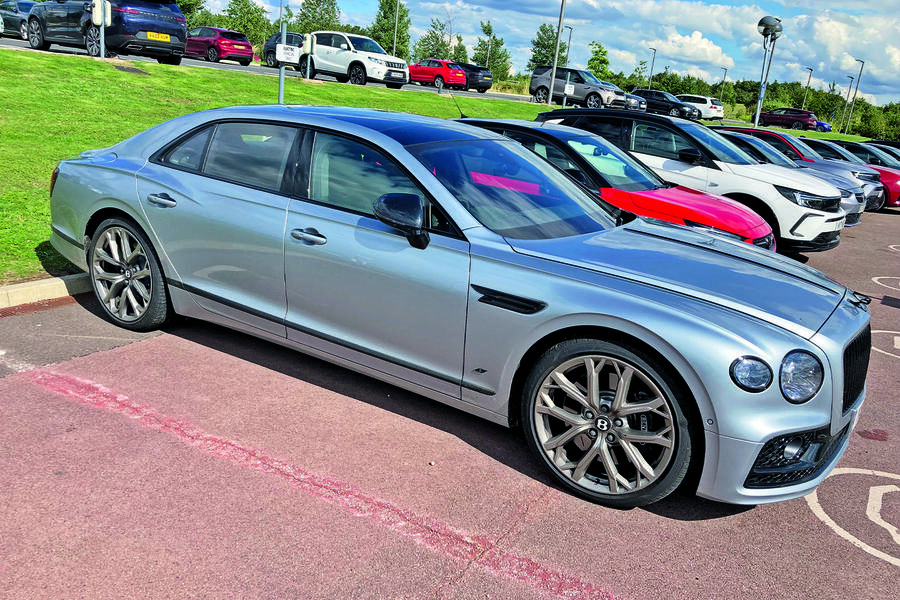
Two things assist you in the accumulation of miles. First, there’s no choice to make when a long journey is in prospect. No other car on our fleet is remotely as good at protecting you from fatigue as the Spur. You have the choice of actively enjoying the car’s progress – a mile-absorber of its own – or letting the lack of intrusion settle your mind on other things. Whatever, you’re assisted by the car’s long range. With 31-33 miles of electric-only running on a full battery and a brimmed petrol tank, you’re offered around 575 miles before refuelling – far more than you will need at one sitting. Or three sittings, probably.
Covering, say, 500 of those miles without recharging will cost you just over £100. You will pay around £6 in home-charging power plus £95-£97 for (preferred but not compulsory) super-unleaded.
Now that I’ve amassed 3000 miles, it’s possible to say with certainty that the trip computer appears to be optimistic by around 0.6mpg (provided our nation’s fuel dispensers have been accurate) and that the Bentley’s true fuel mileage over that distance has been a deeply impressive 36.7mpg.
Chuck in around £75 for electricity, according to the app that monitors my Andersen charger at home, and you have the Bentley’s fuel costs laid bare.
In my view, this car makes an extremely powerful case for the plug-in hybrid as a propulsion medium for the large, heavy car. This is a 2.5-tonne saloon, remember, with a 0-60mph time of just 4.1sec and a 177mph top speed. Admittedly, you don’t use such potential often, but its ready presence is always detectable via the accelerator. It’s also obvious whenever you glance at the tacho at 70mph, barely showing 1500rpm. Sometimes, of course, it’s showing nothing at all, because the Bentley shuts down its twin-turbocharged 3.0-litre V6 engine completely.
There are niggles. The car can tend to roll forward a few feet when you’ve just selected reverse – an undesirable phenomenon – and, as with other Bentleys, I would appreciate a more alert accelerator in my first second or two off the mark. But in the main, this PHEV powertrain doesn’t require Bentley regulars to accept any significant compromise, and in some phases of motoring, it’s the quietest and smoothest of them all.
In short, Bentley’s PHEV progress goes in the direction of driver enjoyment as well as in helping save the planet.
Love it
Walking on air
Its grand, pitch-free ride puts it in a totally different class from normal cars, and not many price rivals are true comfort competitors either.
Loathe it
Tiny capacity
Boot is at odds with car’s huge size and spacious cabin. Battery has to go somewhere, but some owners will need a luggage van following.
Mileage: 3108
More praise for our PHEV's frugality - 9 August
The Flying Spur PHEV is amassing miles rapidly and the fuel mileage has become amazingly consistent. You get 44mpg on a 100-mile trip, starting with a full battery. That falls to 39mpg if it’s a return (ie 200-mile) journey. And you get 29.9mpg – yes, that precise – when you start a journey with the battery depleted. The overall consumption is now stable at 36.2mpg, a superb feat.
Mileage: 3030
Life with a Bentley Flying Spur Hybrid: Month 1
Hybrid power is proving to be the all-important choice - 26 July
Before this car arrived, I only half-believed it would effortlessly acquire miles the way people said it would. It’s so long, and so expensive. But my consciousness of the size has melted away and (however daft it sounds) I feel freed of the scary cost of fuel by a 36mpg average fuel consumption, over 2000 miles. That’s what a hybrid can do for you.
Mileage: 2399
Welcoming the Flying Spur to the fleet - 19 July 2023
It’s always a great moment when a Bentley arrives in the Autocar household. It alters behaviour. People start positioning themselves to drive it and the list of aspirants grows. It swells further if potential drivers hear that this Bentley is a V6-powered plug-in hybrid, equal in performance to a V8 but much more economical if you religiously charge its 18kWh battery when opportunities present.
The queue has been shorter this time, because the plug-in hybrid in question is a Flying Spur limousine, whose 5.3m length means it won’t easily fit our small office car park. And our usual multi-storey across the road (admittedly built for the Morris Minor) is entirely out of the question.
Which is not to say the length should be viewed as a shortcoming. This Bentley is a full-on limousine, a relatively practical car that excels at special occasions, as you learn the first time you open one of the long rear doors and survey the plush rear cabin. I have discovered that among the earliest instincts of a Spur debutant is to find excuses to take friends for rides.
I took delivery of the Autocar Spur at Bentley High Wycombe, a new dealership just off the M40, north-west of London. I’d discovered the place a few weeks before on the rebound from a nearby JLR dealership (I’d been surveying used car stock, a warped kind of hobby) and had been roundly ignored. I spotted the Bentley sign by chance, wondered if they would be more welcoming, and of course they were.

A friendly and non-pushy sales exec called Andrew Bradburn proved to be helpful and knowledgeable, so when we were later discussing with Bentley HQ a suitable place for the new Flying Spur Hybrid to be delivered, I thought of High Wycombe and everyone was happy with that. I arrived on the appointed day, met various staff members led by dealer principal Ian Smith, and spent an hour learning about our new car (again with Andrew Bradburn leading) before driving it away, dosed with quality coffee and very well briefed.
The Hybrid’s major claim is its petrol-electric powertrain. It is pretty similar in overall weight to a V8, except that its battery weight migrates to the lower boot, which gives the weight distribution a 52% rearward bias. In practice, you feel nothing different. What you do notice, though, is the lack of the four-wheel steering system (omitted to make space for the battery) that has been available with non-hybrid Spurs since 2020. The Hybrid isn’t cumbersome, but you’re always aware of its size where the 4WS versions feel almost compact.
However, there are no other drawbacks and some big advantages. So far, my overall fuel consumption is 35.5mpg, a cool 10-12mpg (or around 50%) better than I’d get from a V8. Of course, the available EV-only mode comes with amazing refinement, but you hardly notice when the twin-turbocharged V6 chimes in, both because that’s also refined and because the integration of the different drive sources is first class. And it goes. The figures say it’s a shade slower than the V8 and W12, but a Spur Hybrid can still lay down an effortless 0-100mph sprint in 10.2sec, which is all you need to know.
The battery-only range – quoted at 25.5 miles – has so far turned out to be 33 miles, which doesn’t match a Range Rover’s prodigious 50-odd miles but is still handy. It is delivered by a strong 134bhp electric motor that sits between the 2.9-litre V6 engine and the eight-speed automatic gearbox (and, like all electric motors, it delivers maximum torque at step-off), and the EV-only performance feels accessible and powerful.
The car will frequently cruise on motorways at 70mph with the engine off. At my Gloucestershire domestic power rates, using a 7kWh Andersen charger, a full charge (the battery’s usable capacity is 15.1kWh) takes a little less than two and a half hours and costs a shade under £6. When I acquire more experience, I’ll do the sums properly.
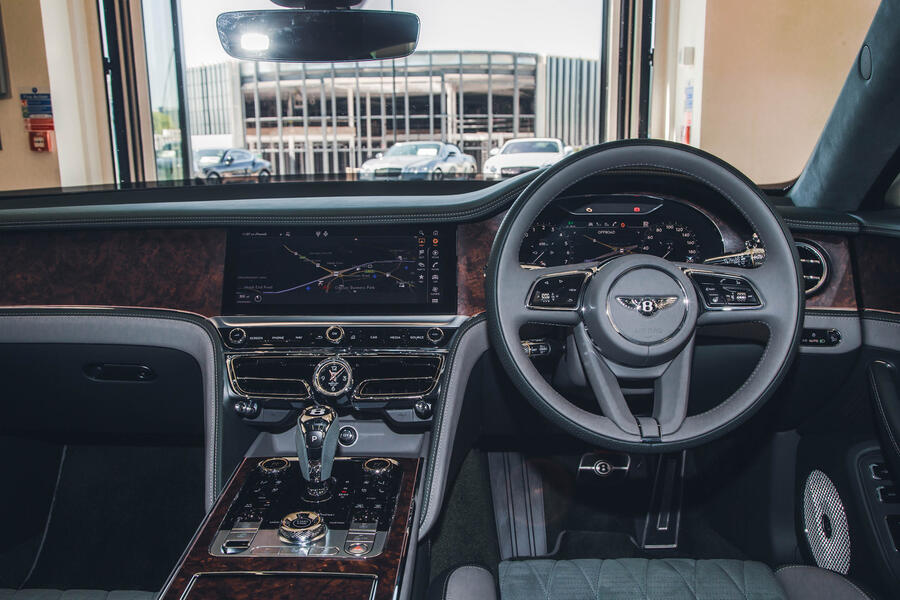
For the first few days, I treated the Flying Spur with an excess of reverence. I couldn’t help it: even if you’ve driven your share of expensive cars, it’s hard to act normally in a £250,000 Flying Spur. I mean, what is normal? I kept doing two conflicting things: trying to emulate the casual aplomb of people who actually buy cars like this, and imagining the awfulness of contacting a granite kerb with one of the 22in sports alloys finished in Pale Brodgar Satin, a £4770 option.
In succeeding days, I have become more used to the car, not least because its excellent steering allows it to be placed very accurately on the road, and its long wheelbase (as well as delivering a brilliant primary ride) gives it excellent directional stability. I’m not entirely sold on the secondary ride, mind. Those 22in alloys occasionally introduce the jitters. Still, we’re getting on well, the Spur and I, and I predict an even closer relationship in future.
Second Opinion
I think the Hybrid might be the best Flying Spur. It’s refined; it’s fast; it’s slick and polished in operation; it’s got just that bit more driver appeal than you expect of a car its size; and, with the electric running, there’s a duality to it that no other Spur has. This is how to electrify a luxury car: considerately.
Matt Saunders
Bentley Flying Spur S Hybrid specification specification
Prices: List price new £195,100 List price now £211,295 Price as tested £255,750
Options: Naim audio £6860, Touring Specification (lane assist, night vision, head-up display, adaptive cruise) £6610, rotating fascia display £4965, 22in sports alloy wheels £4770, Diamond Quilting Specification £4200, full-length centre console £3390, tilt/slide double sunroof £2600, mood lighting £1980
Fuel consumption and range: Claimed economy 85.6mpg Fuel tank 80 litres EV range 33 miles Test average 37.1mpg Test best 44.0mpg Test worst 28.9mpg Real-world range 590 miles (petrol), 30 miles (electric)
Tech highlights: 0-62mph 4.3sec Top speed 177mph Engine V6, 2894cc, twin-turbocharged, petrol, plus electric motor Max power 536bhp Max torque 533lb ft Transmission 8-spd automatic, 4WD Boot capacity 351 litres Wheels 22in, alloy Tyres 275/35 ZR22 (f), 315/30 ZR22 (r) Kerb weight 2505kg
Service and running costs: Contract hire rate N/A CO2 75g/km Service costs None Other costs None Fuel costs £835 (petrol), £59.80 (electric) Running costs inc fuel £894.00 Cost per mile 21.6 pence Faults None

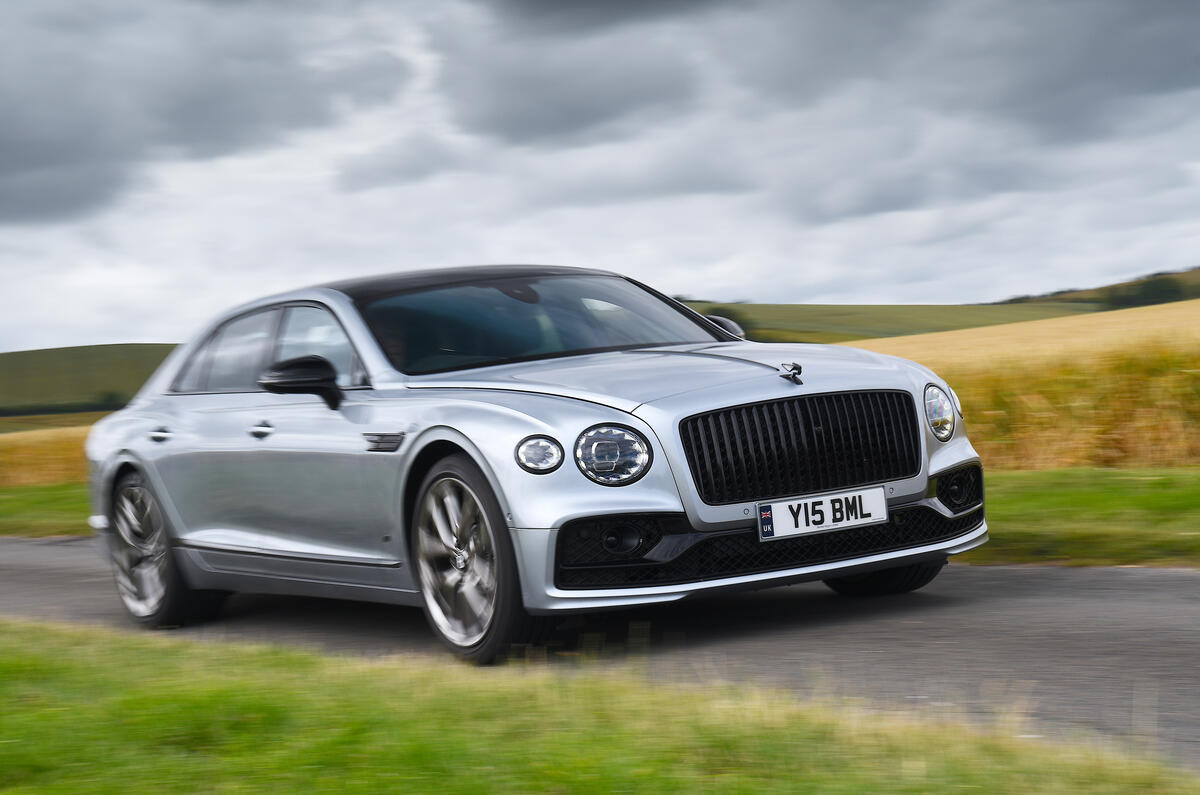
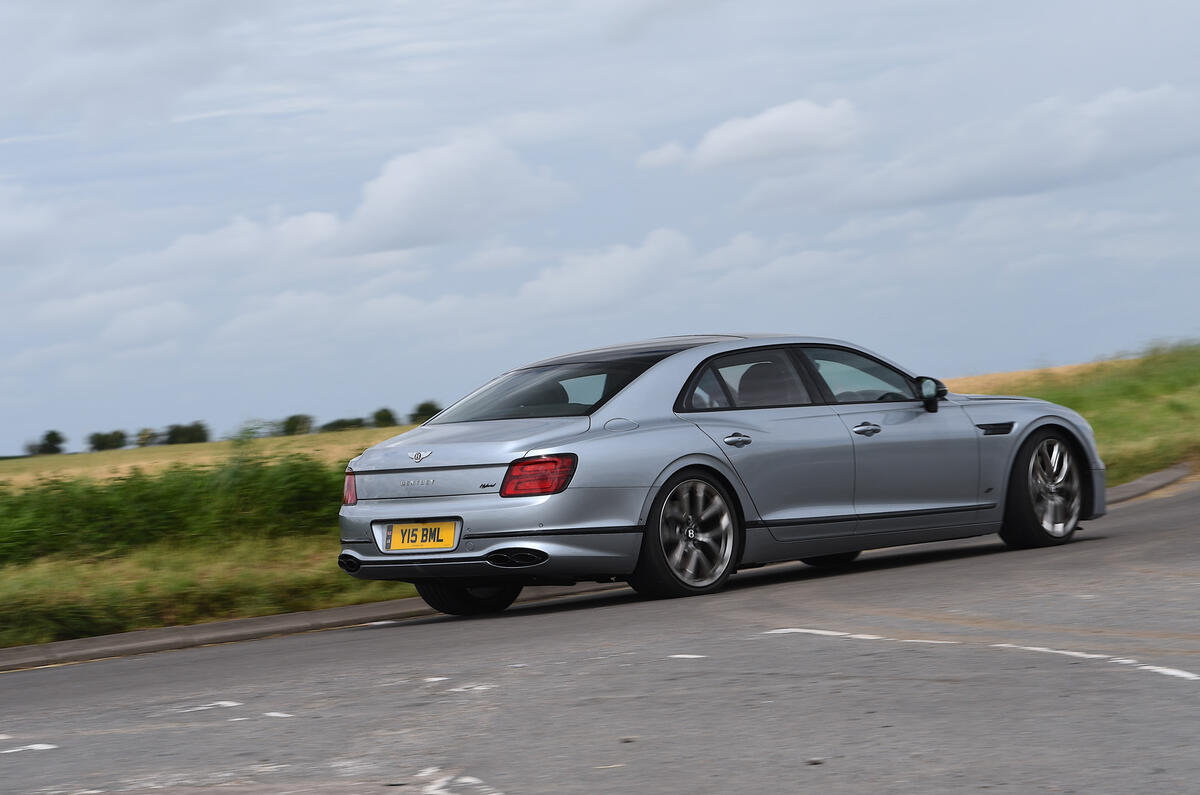
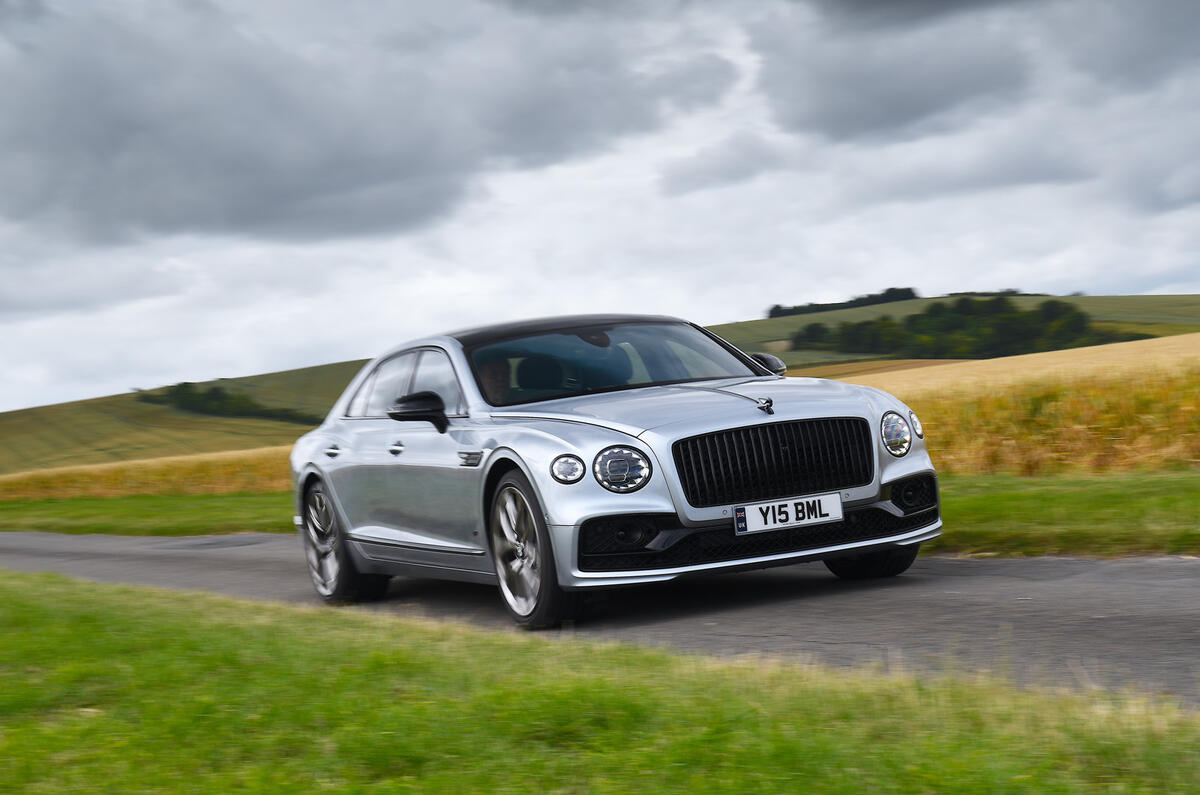
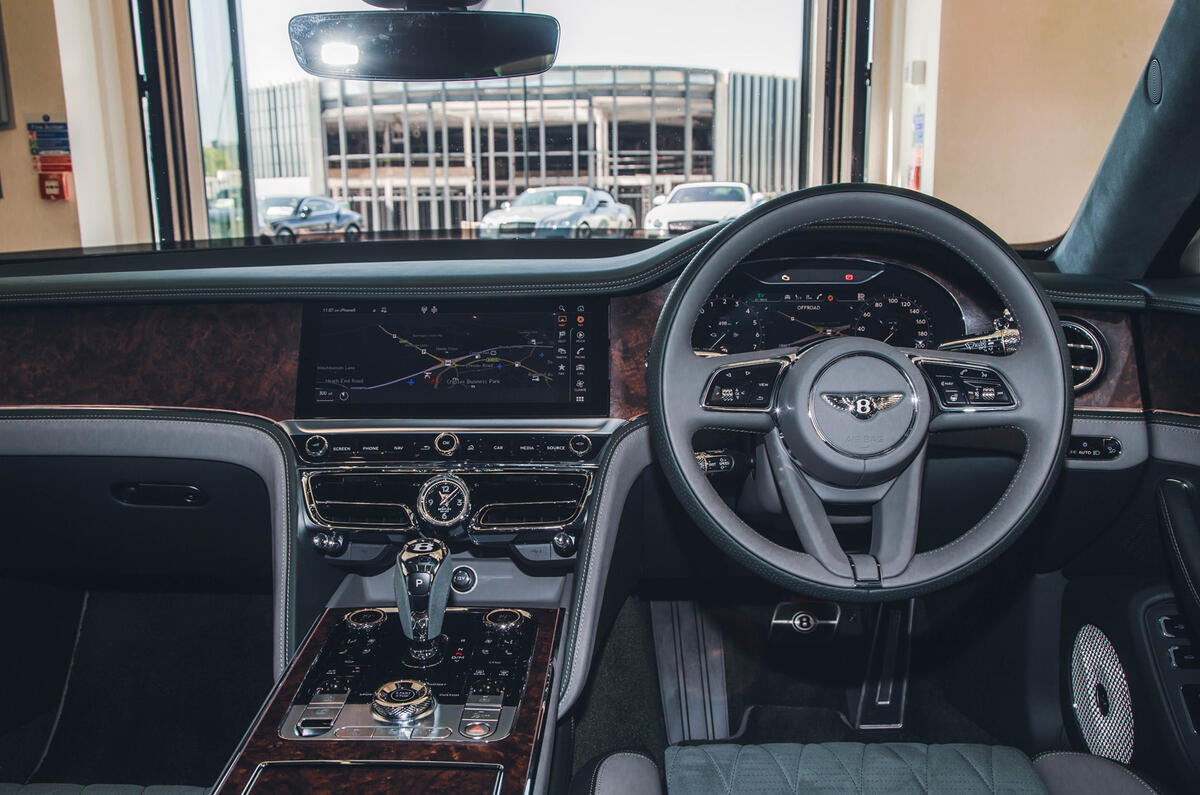

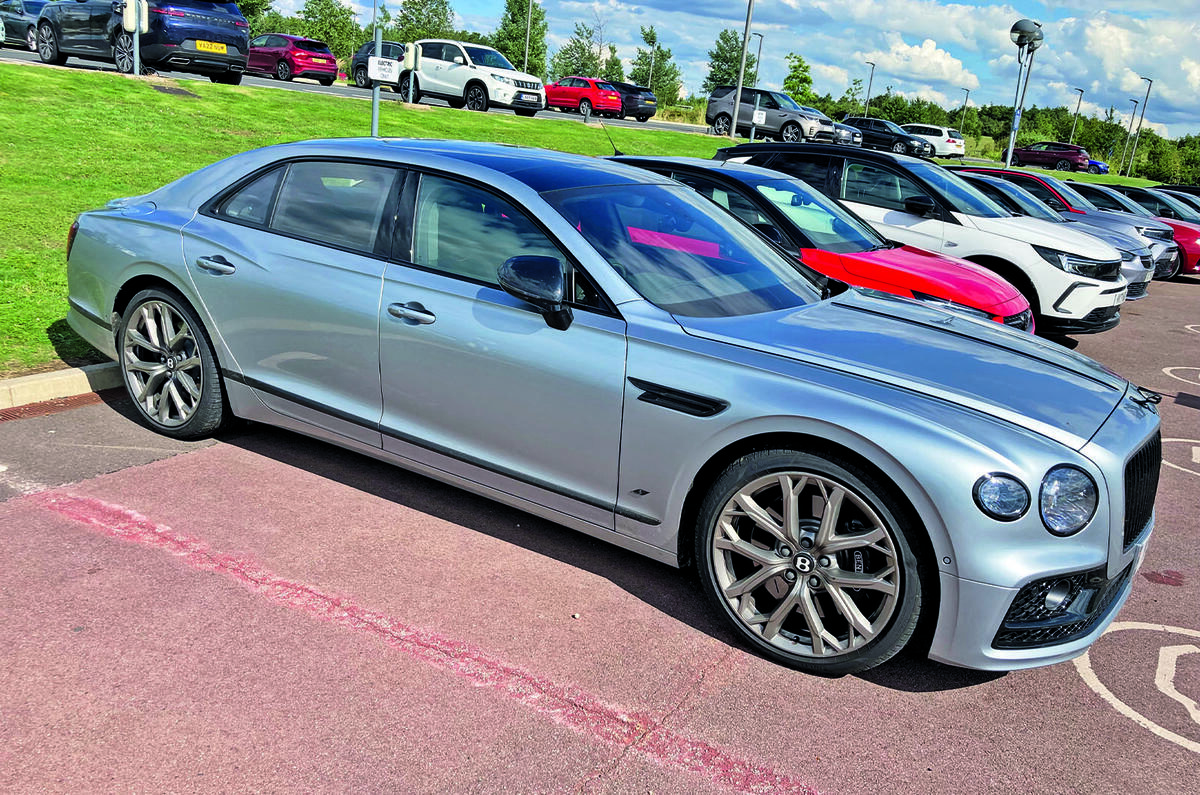
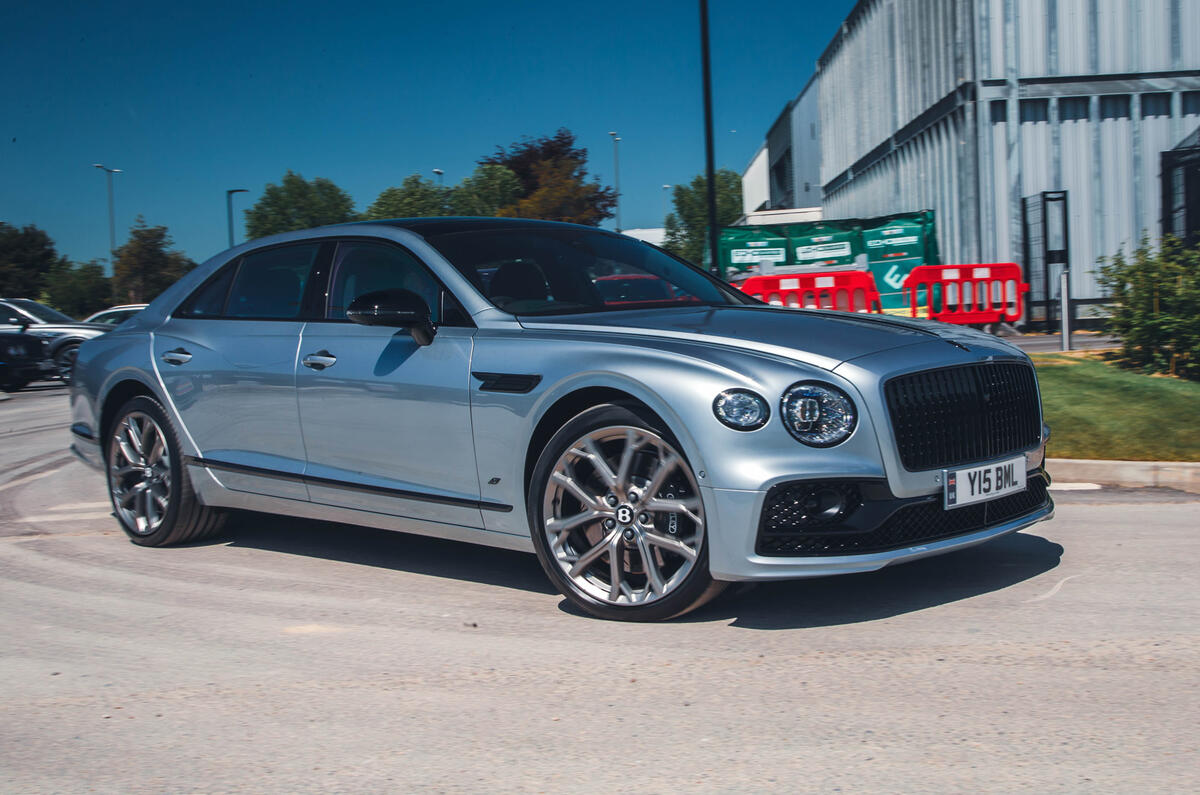
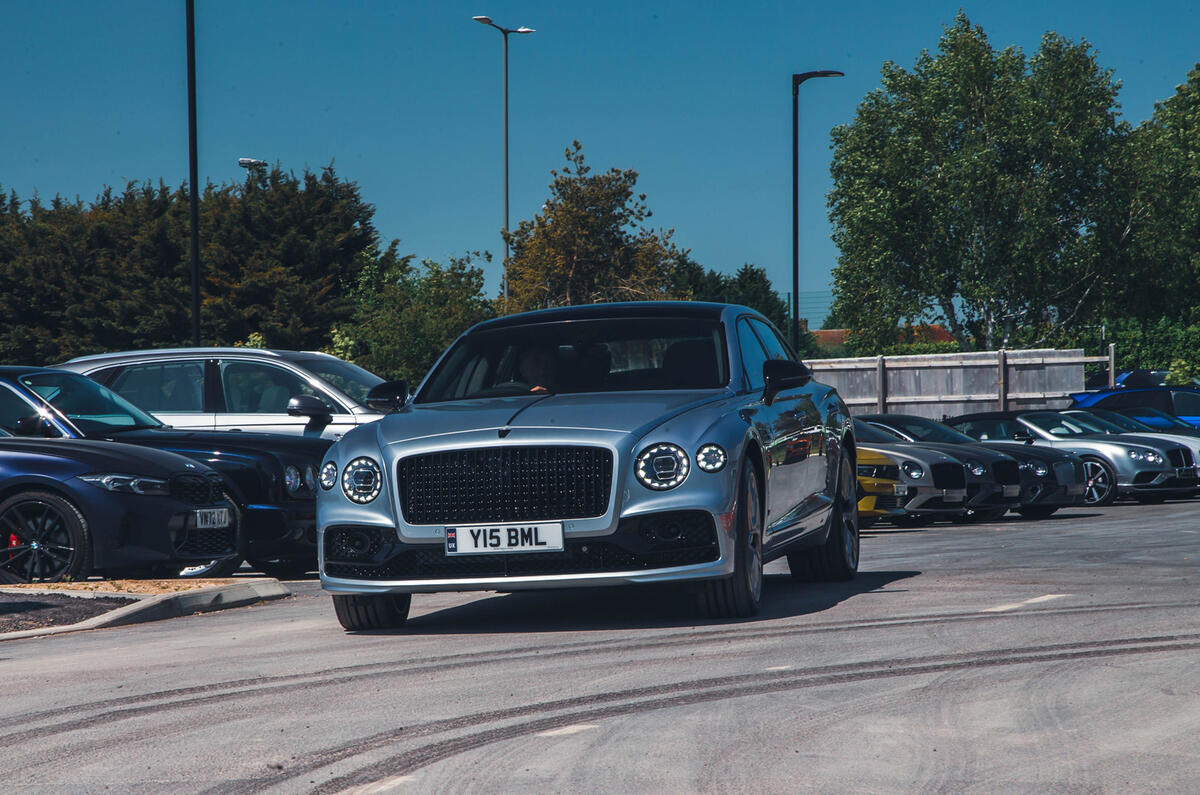
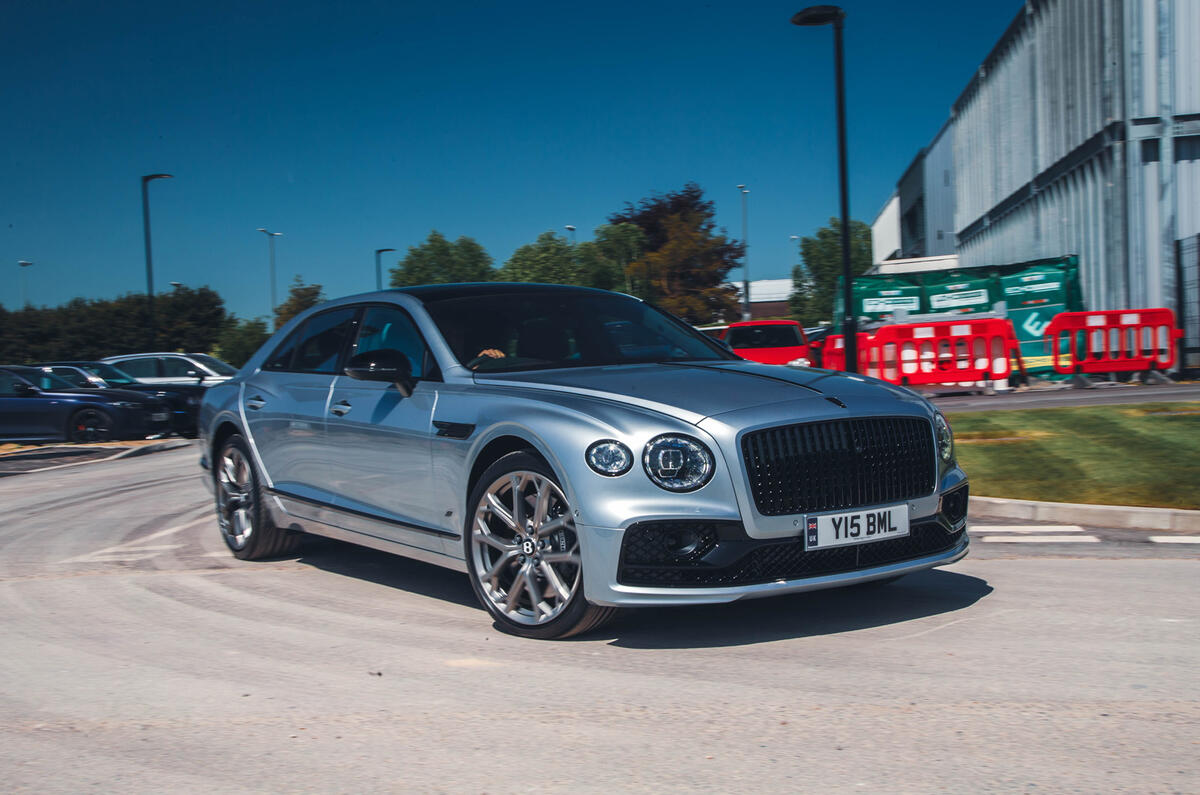
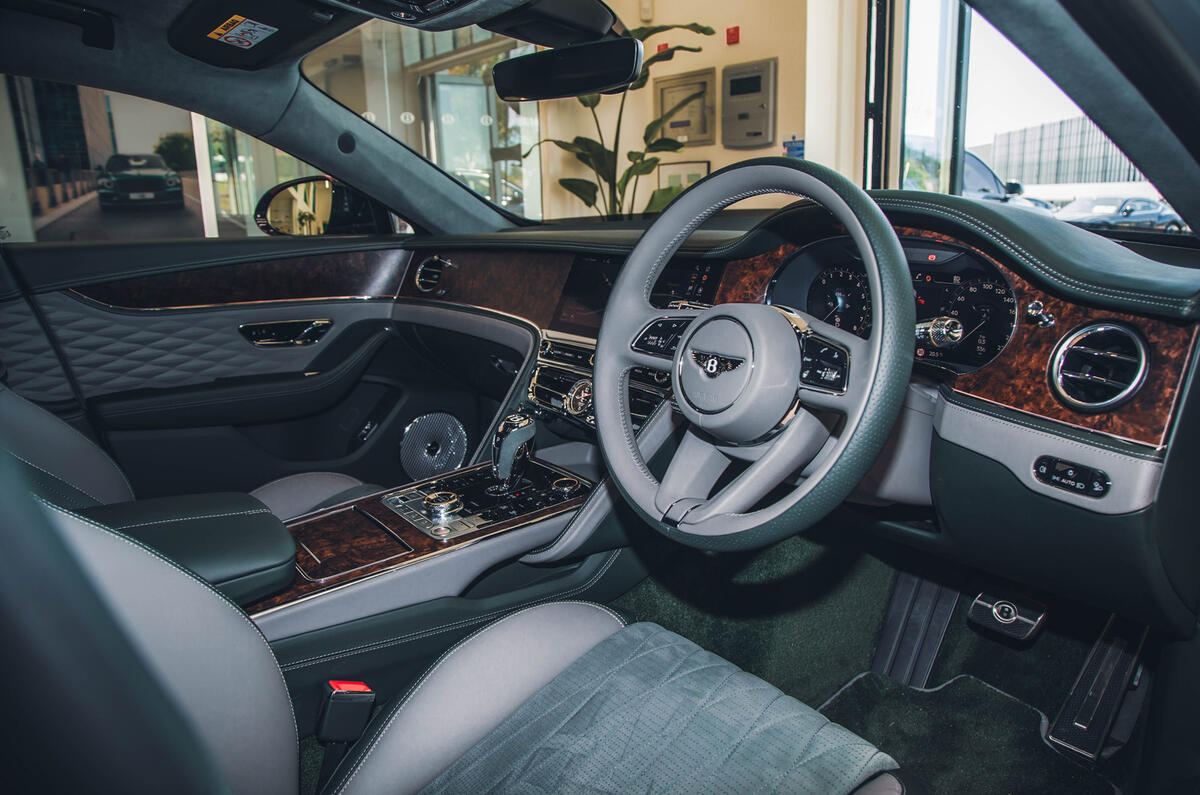
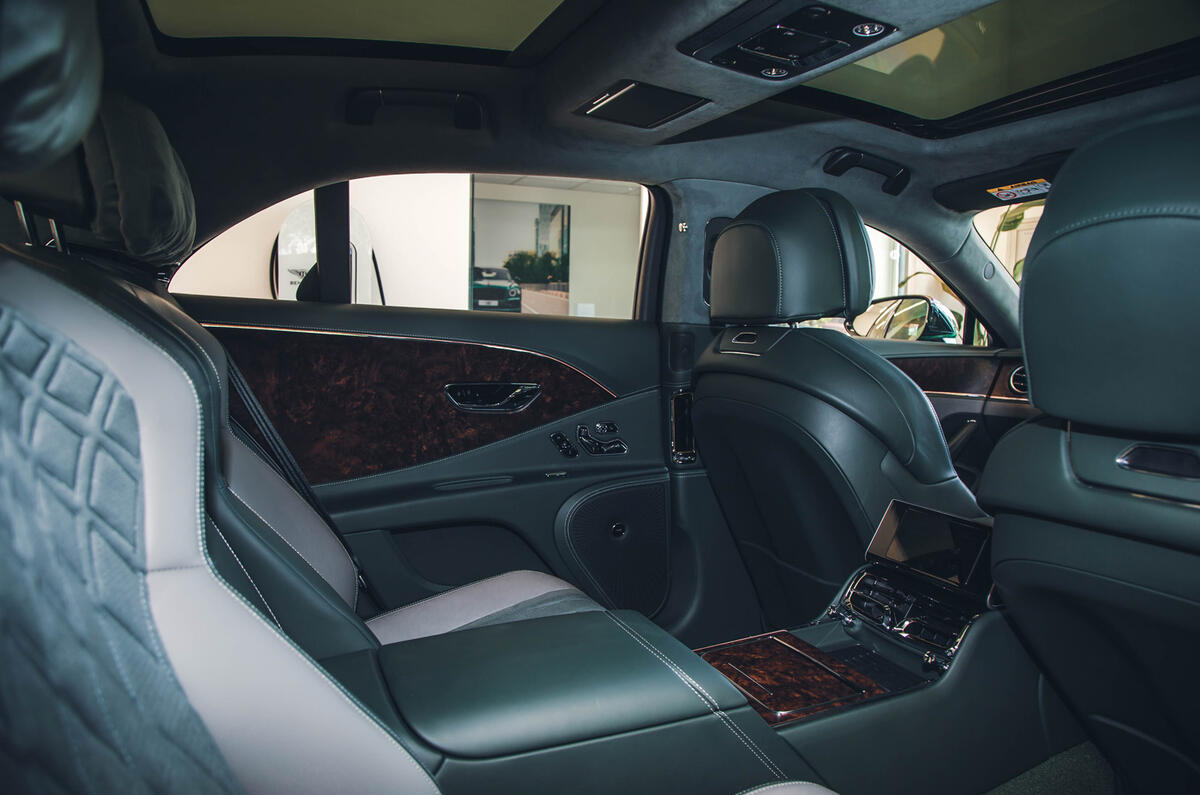
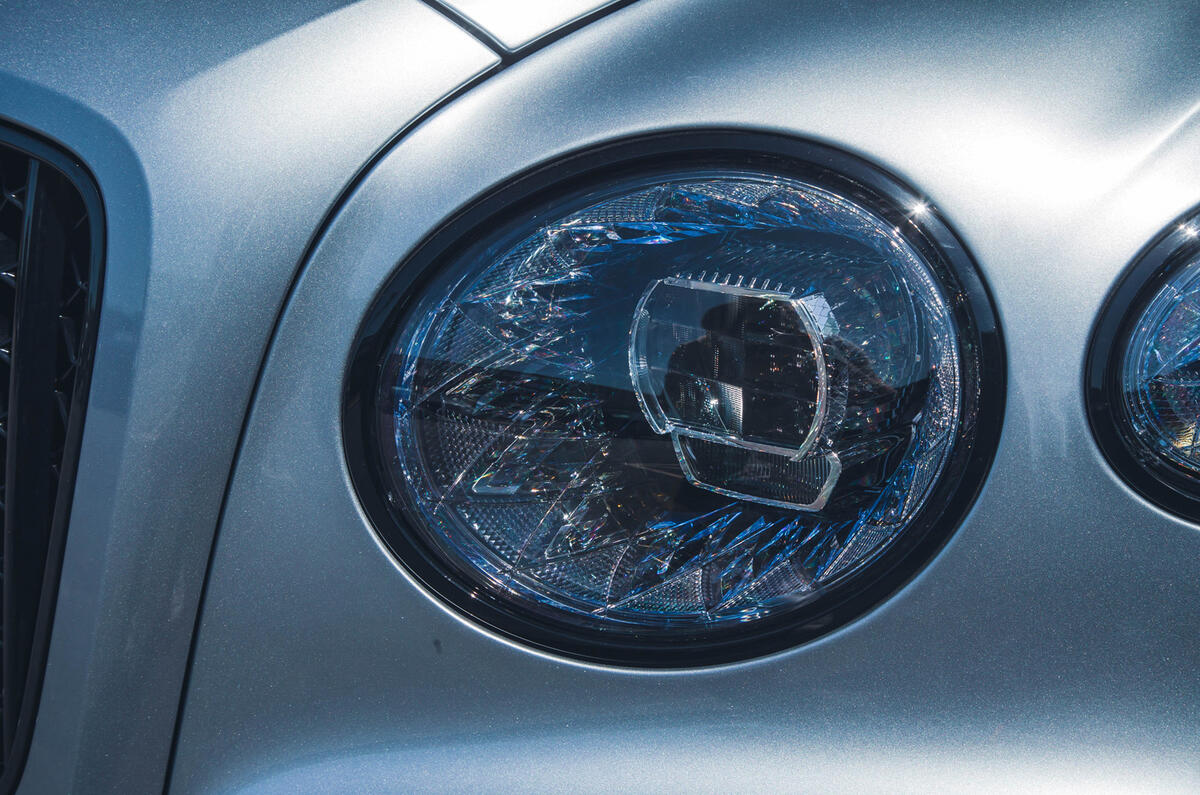
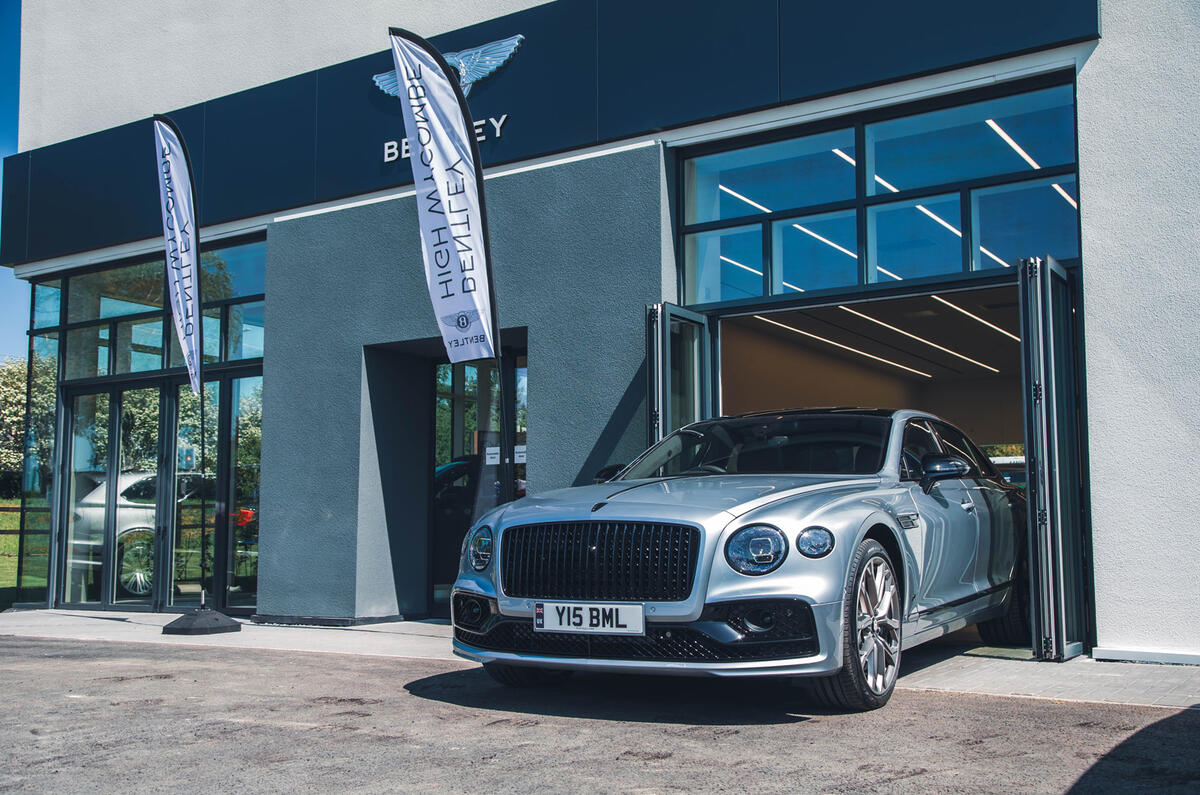

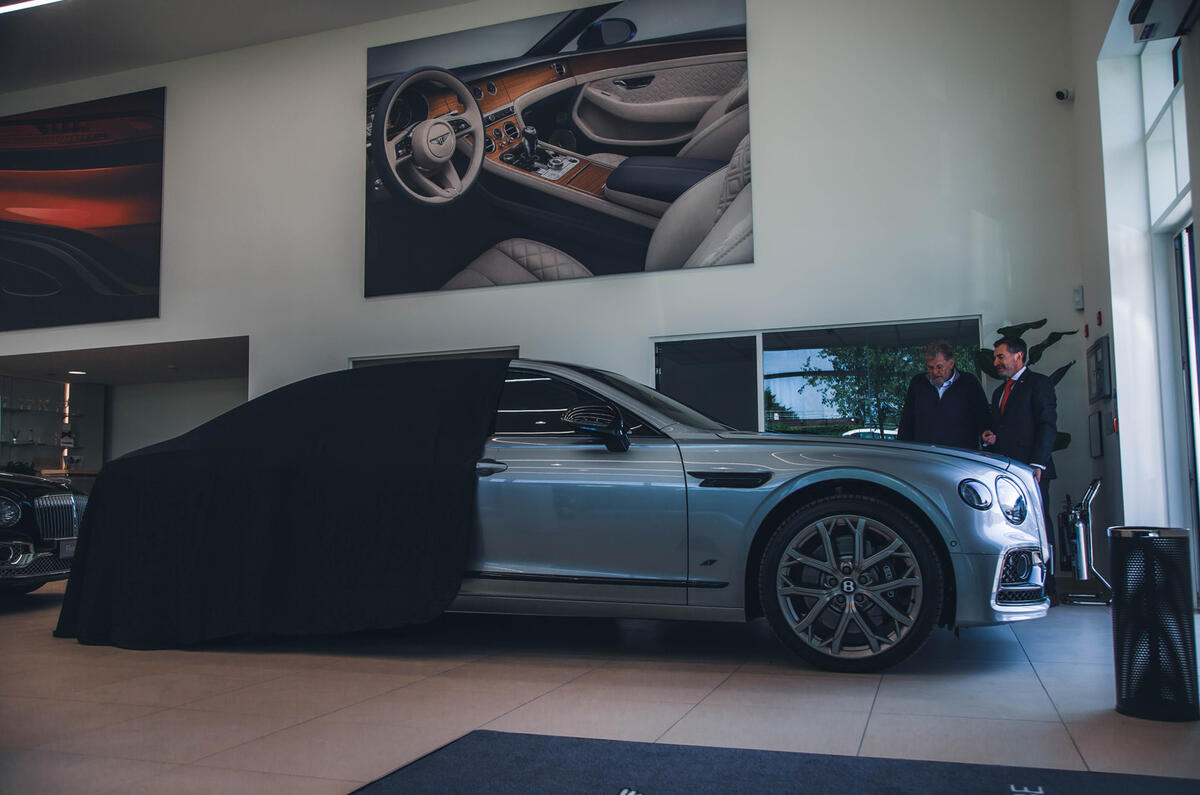

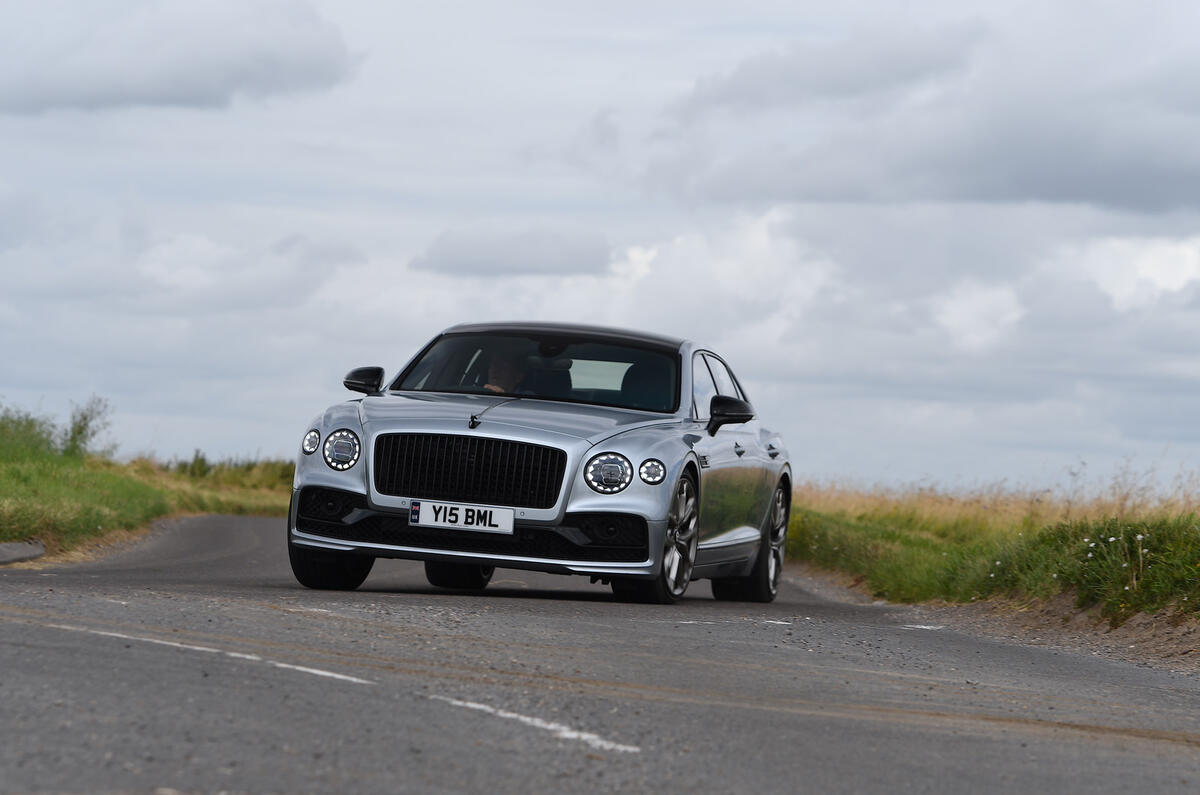
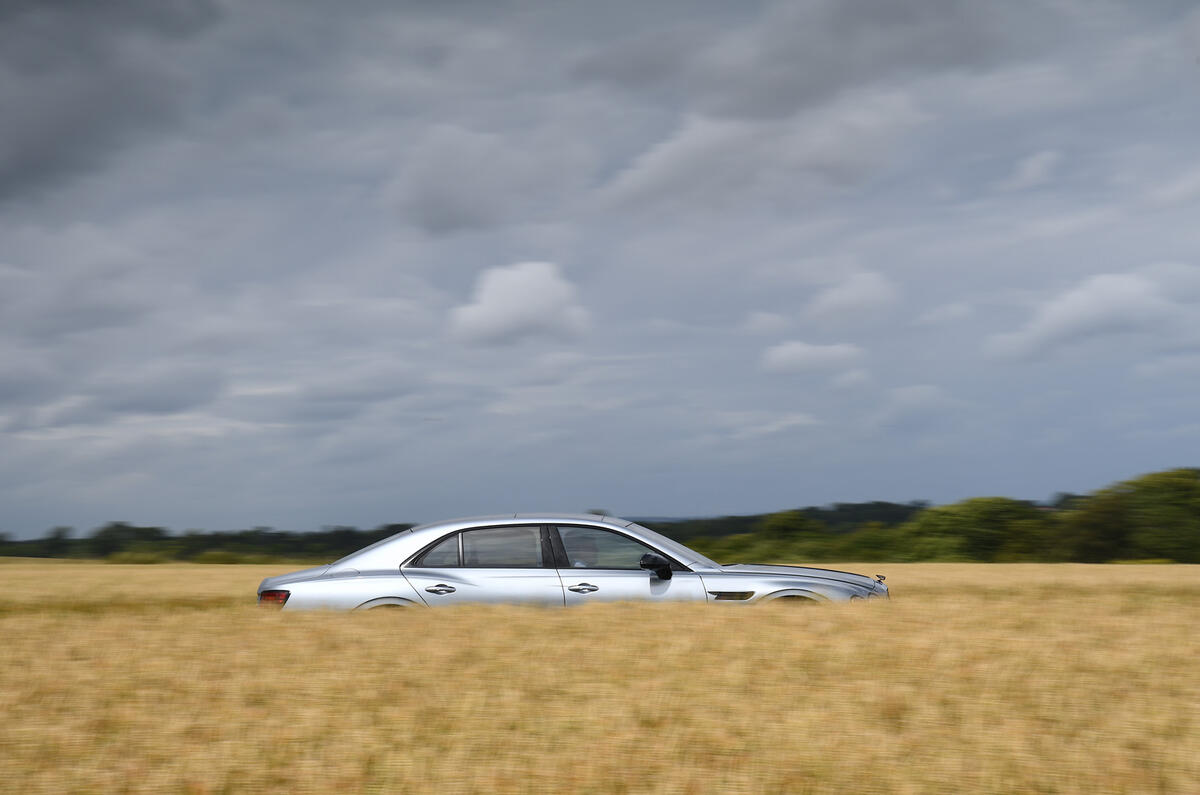
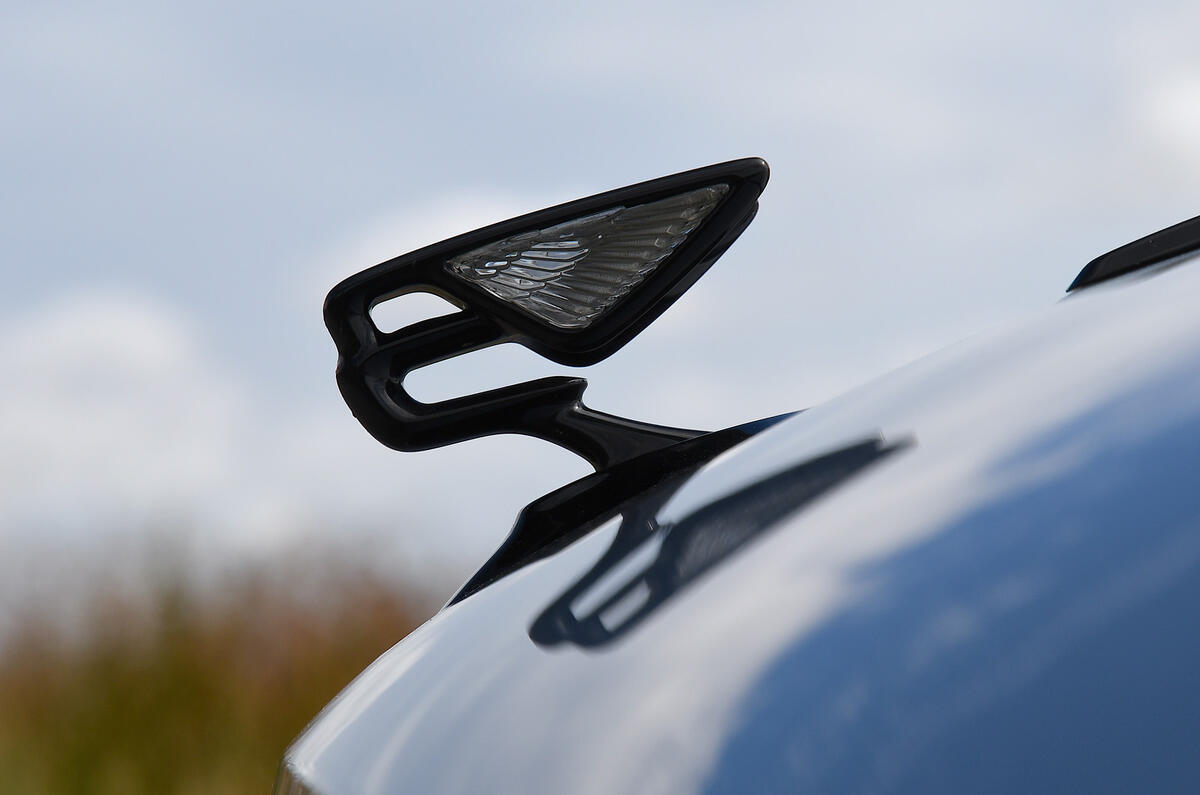
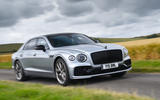
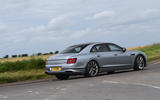
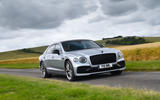



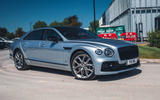

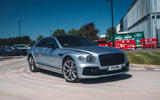




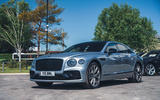


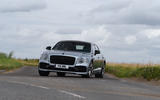

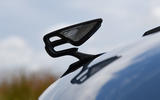


Join the debate
Add your comment
"The overall consumption is now stable at 36.2mpg, a superb feat. "
Except it's not is it? That electricity that pushed it up from less than 30 doesn't magically come from nowhere.
I expect better from Autocar.
Hate how they've gone with the all black trim everywhere. Looks so tacky and chavy. Wish they'd kept the looks elegant.
One of these which I'm sure was the same colour, parked alongside me at the quieter far end of a large garden centre car park in Edinburgh the other day. I parked there trying to avoid the dings of other less careful car owners, he parked there because he needed four spaces. I thought my Kodiaq was large until this pulled alongside. Don't usually like Bentleys but this thing was gorgeous in that colour.
The option pricelist is eyewatering but if the new price of the car is £195k and £255k 'as tested', how come your options 'only' add up to approx £35k? Where did the other £25k go to?